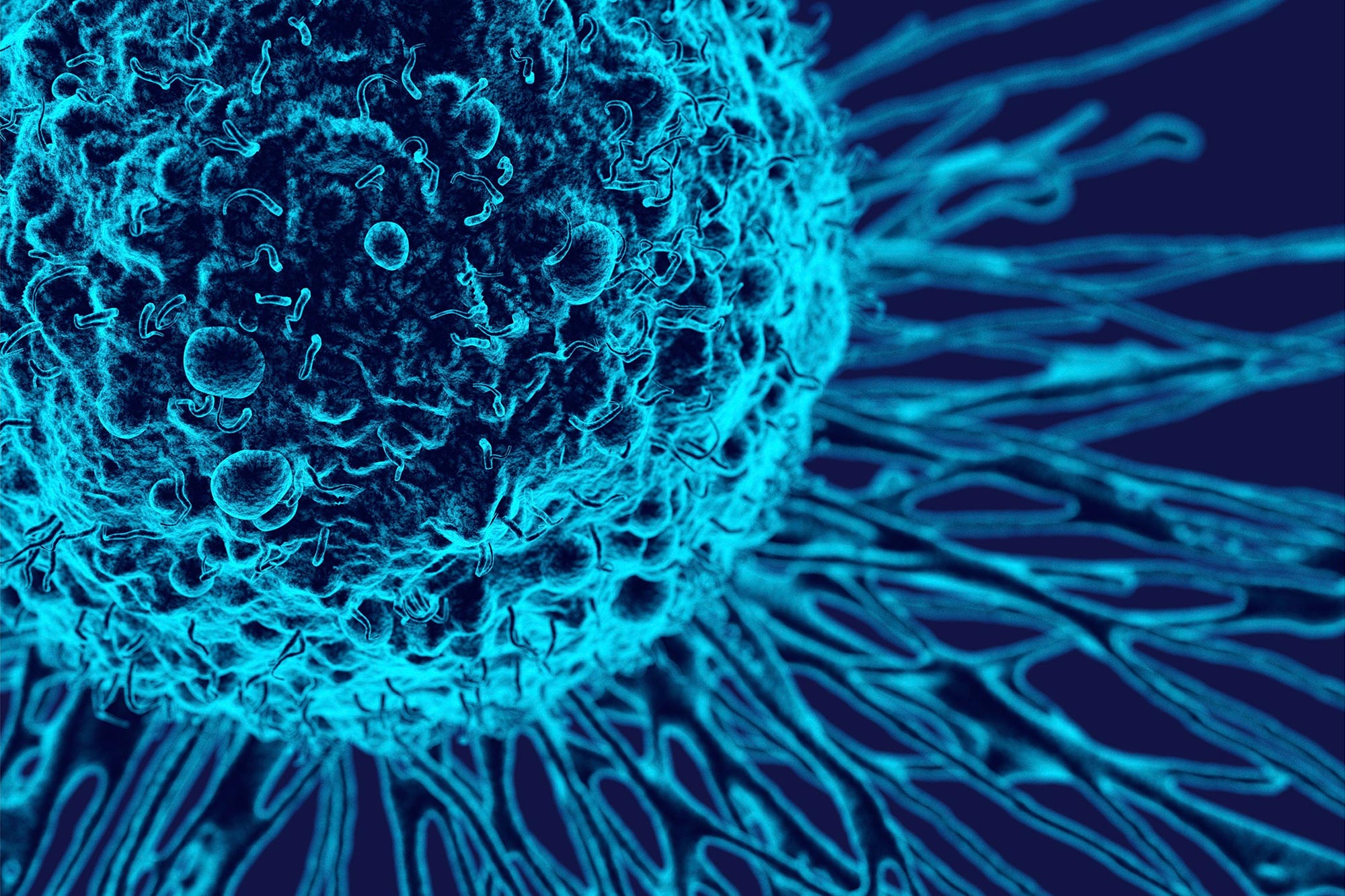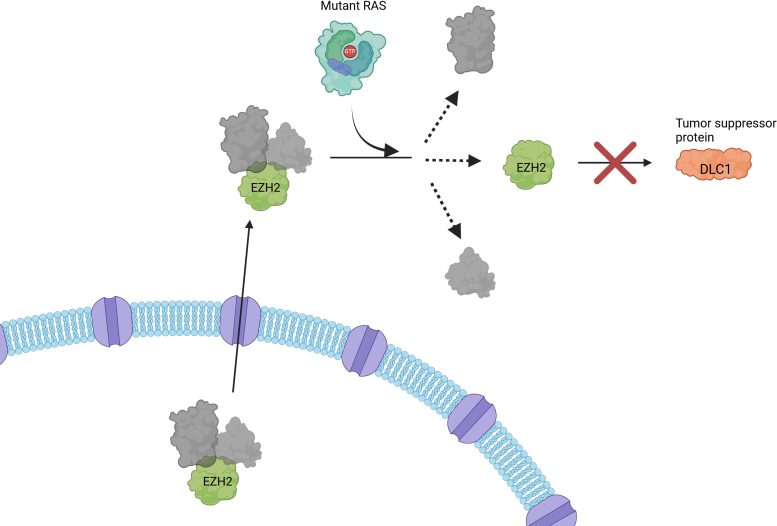

These findings could pave the way for new treatment approaches for cancers driven by RAS mutations.
Researchers at the National Institutes of Health (NIH) and their collaborators have uncovered a novel mechanism by which RAS genes—commonly mutated in cancers—can promote tumor growth, extending beyond their established function in cell surface signaling.
Mutant RAS, they found, helps to kick off a series of events involving the transport of specific nuclear proteins that lead to uncontrolled tumor growth, according to a study published November 11, 2024, in Nature Cancer.
RAS genes are the second most frequently mutated genes in cancer, and mutant RAS proteins are key drivers of some of the deadliest cancers, including nearly all pancreatic cancers, half of colorectal cancers, and one-third of lung cancers. Decades of research have shown that mutant RAS proteins promote the development and growth of tumors by activating specific proteins at the cell surface, creating a constant stream of signals telling cells to grow.
A Breakthrough in Understanding RAS Function
“This is the first study to show that mutated RAS genes can promote cancer in an entirely new way,” said study author Douglas Lowy, M.D., deputy director of NIH’s National Cancer Institute (NCI). “The finding of the additional role for RAS proteins has exciting implications for improving treatment.”

Drugs that block mutant RAS proteins have been available as cancer treatments for only a few years and have been approved by the Food and Drug Administration to treat lung cancer and sarcoma. Although their development was a major scientific success, RAS inhibitors have thus far had a limited impact on patient outcomes, improving survival by only a few months in most people.
The Mechanism: How Mutant RAS Interferes with Tumor Suppression
Over 35 years ago, a group led by Dr. Lowy contributed to the early studies that identified RAS as a cancer-causing gene and helped explain how it promotes tumor growth. In this new study, the research team found that mutant RAS is directly involved in the process of releasing a nuclear protein called EZH2 from a complex transported from the nucleus to the cytoplasm. Once released, EZH2 facilitates the breakdown of a tumor suppressor protein called DLC1. Blocking mutant RAS stopped EZH2 from being released, restoring the activity of DLC1.
In experiments in human lung cancer cell lines and mouse models of lung cancer, the researchers found that combining RAS inhibitors with different targeted cancer drugs that reactivate DLC1’s tumor suppressor activity had potent activity against cancer—more potent than that of RAS inhibitors alone.
The study also found evidence that mutant RAS proteins perform this same function in other cancer types, suggesting that this mechanism may be a general feature of cancers with mutated RAS genes.
The researchers believe their findings may have potential applications for the treatment of RAS-fueled cancers. They have started to look at how this function for RAS works in pancreatic cancer in particular because there are so few effective treatments for this type of cancer.
“New treatment combinations could one day be developed that take this new role for RAS into consideration,” Dr. Lowy said.
Reference: “The pro-oncogenic noncanonical activity of a RAS•GTP:RanGAP1 complex facilitates nuclear protein export” by Brajendra K. Tripathi, Nicole H. Hirsh, Xiaolan Qian, Marian E. Durkin, Dunrui Wang, Alex G. Papageorge, Ross Lake, Yvonne A. Evrard, Adam I. Marcus, Suresh S. Ramalingam, Mary Dasso, Karen H. Vousden, James H. Doroshow, Kylie J. Walters and Douglas R. Lowy, 11 November 2024, Nature Cancer.
DOI: 10.1038/s43018-024-00847-5

